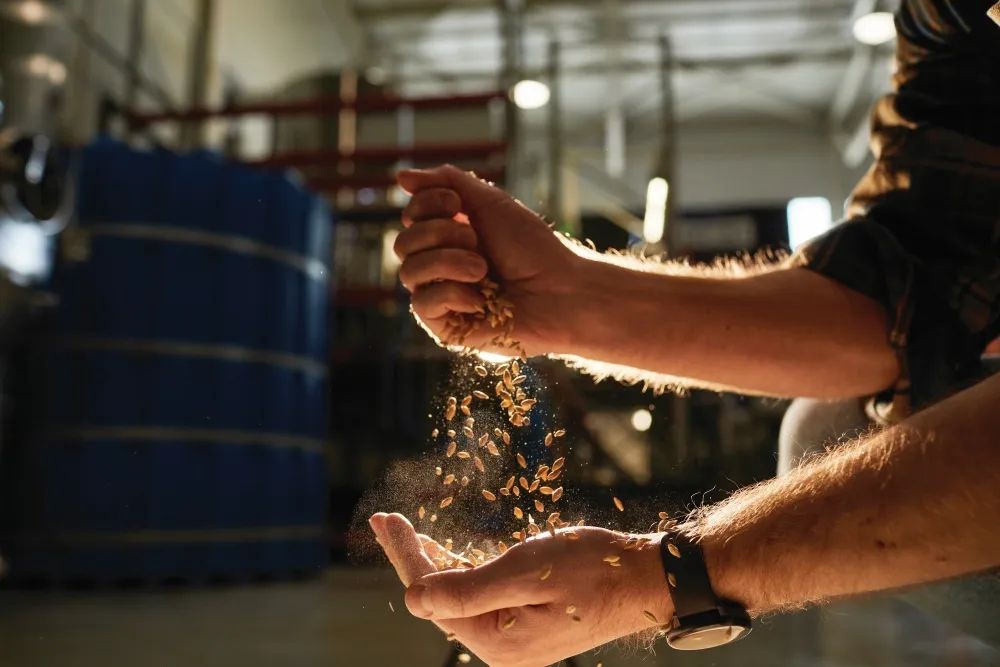
Yeast: It’s What’s Brewing!
June 2023
article by stephanie hobby | photos by sam hoffman
American writer David Rains Wallace once famously said, “Fermentation may have been a greater discovery than fire.” And while it’s often quoted humorously, he’s not wrong. Humans have been harnessing the unique ability of microorganisms to chemically deconstruct sugar molecules into more basic compounds - albeit mostly knowingly - since nearly the dawn of humanity.
For the last 10,000 years, we have relied on fermentation for food, medicine, and fuels. It’s also responsible for a frothy beverage humanity has been enjoying for millennia: beer. This ubiquitous beverage has grown up right alongside the human race; in fact, some anthropologists would argue it has been around longer than bread. (Seriously!)
But what makes both beer and bread so special? Neither would get very far without the microscopic powerhouse found in yeast, specifically the strain Saccharomyces cerevisiae, more commonly known as brewer’s yeast. All yeast are classified in the fungus kingdom, and these single-celled organisms are literally everywhere. In fact, if you participated in the cultural craze of growing your own sourdough starter during the pandemic lockdowns, you know that yeast is even floating in the air around us! The vast majority of the 1,500 known yeast species are found in soils and on plants and tend to congregate on sugary surfaces such as fruits and flower nectar.
It’s that sweet tooth that fuels the bread and beer-making processes. Yeast chow down on sugars and burp out carbon dioxide and alcohol. We don’t get tipsy on bread, though, because the alcohol breaks down during baking.
To understand the magic of yeast and beer brewing, I turned to Sam Hoffmann, owner and founder of Red Lodge Ales, now celebrating its 25th year, and Last Chance Cider in Billings. All beer starts with four essential ingredients: water, malted barley, hops, and yeast, but from there, endless flavors, colors, and even textures are possible.
“The biggest ingredient is water. Ninety-five percent of beer is water, and Red Lodge is a great place to brew because the water is really soft, so we start with a blank palette. If we need to harden it, it’s a lot easier to add different salts or calcium to the water than trying to soften hard water, so we’re pretty lucky there,” Hoffmann said.
Next comes grain, typically malted barley, or barley that has been soaked and sprouted and then abruptly stopped by heating or “kilning” it. This creates a distinct flavor and color. “We’re fortunate that Montana is the first or second biggest barley-growing state in the country, depending on the year, so most of our barley is grown and malted right here in Montana,” Hoffmann said.
He and his team mix hot water with ground grain in a process called mashing. It steeps for 45 minutes while starches in the grains break down into sugars. Using that mash water, along with fresh water, they percolate the mixture through even more grain, producing wort. Wort is boiled in a kettle, enhancing some of the colors and malt flavors.
Then, they add the third ingredient: hops. Hops pack a powerful punch and help balance out the malty flavor by adding bitterness and spiciness. While some hops are grown in Montana, they thrive in the Pacific Northwest, and Hoffmann sources many of his from Yakima, Washington. The bulk of the hops are added during the boil, which helps to solubilize the oils into the wort. Once that’s done, it all goes into a giant whirlpool that separates the solids and proteins from the wort, and it’s cooled in a heat exchanger. This is a critical step because yeast is joining the mix next, and it’s a little finicky. If the water is too hot, they’ll die; if it’s too cold, they won’t activate.
The tiny fungi get to work, churning out alcohol and carbon dioxide, naturally carbonating the beer. For ales, this takes a week or less; for lagers, it’s closer to two weeks. Then Hoffmann and his crew cold age the beer. “Aging settles out yeast and kind of allows more chemical reactions to smooth out the beer and flavors. From our end, we’ll clarify the beer in the centrifuge, and then we can keg or package the beer from there,” he said.
Getting the chemistry right is critical to good beer making; Red Lodge Ales’ production manager is a chemical engineer. Tinkering with the ingredient ratios or adding hops at different times of the brewing process leads to dramatically different alcohol contents and flavors, ranging from a heavy porter to a bitter IPA to the sweet citrusy flavor of a Hefeweizen.
Part of what sets Red Lodge Ales apart from larger operations is that they keep things fresh by not pasteurizing their beers and sourcing locally whenever possible. When Hoffmann first opened his operation in 1998, he said he had fun with the learning process, figuring out how to manage yeast and carbonation and creating different flavor profiles. Twenty-five years in, and that initial fascination is still there. Even though Red Lodge Ales has a solid portfolio of award-winners, including Bent Nail IPA, Czechmate Pilsner, Glacier Amber Ale, Helio Hefeweizen, and Jack’s 90 Scottish Ale, they’re still coming up with new ideas, which is part of the fun of craft brewing.
If you want to see the operation for yourself, Sam’s Tap Room is open seven days a week on the north end of Red Lodge. I (n the fall and early winter, you can watch his team press apples for ciders on Thursdays at the Last Chance Cider in Billings.
Originally printed in the June 2023 issue of Simply Local Magazine
Never miss an issue, check out SLM's digital editions here!





